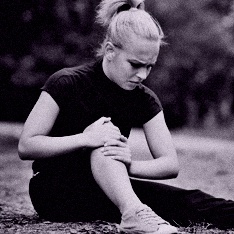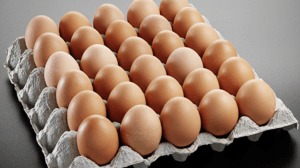Are you aware of the role that food has in the healing process following an injury, writes Lauren Dobson?
Do you know how much your nutrition can effect rehab and recovery?
Did you know that it is possible to accelerate recovery following injury by what you eat?
Nutrition is a big part of your treatment path when you are injured and performing rehab to return to your chosen activity.
Many people now carry some form of injury that requires management from regular injury prevention strategies such as sports massage to strict exercise rehabilitation programmes for return to play.
Contributing factors such as physical mass, gender, overuse, collision forces and force generation are all reasons behind the severity and quantity of injuries.
Despite the complications behind the nature of injuries, the healing process will always be the same.
There are three phases to the healing process – inflammation, proliferation and remodelling.
Inflammation Stage
The inflammation stage is the body’s immediate natural response to any type of injury, where the bleeding and swelling is at its worst.
The process has a rapid onset quickly increasing to its maximum reaction (we’re talking minutes or hours). There will always be an inflammatory response which will cause pain and discomfort in all injuries, but is classed as a positive function (normal and essential), which then gradually reduces over the healing process.
During the first five days of the inflammation stage, pain can be reduced nutritionally with anti-inflammatory foods.
Those anti-Inflammatory foods include; grapefruit, green beans, spinach, cauliflower, lemons and limes, broccoli, peppers, courgettes, asparagus, eggs, turmeric, cinnamon, celery, pineapple, blueberries, salmon, walnuts, chai seeds, coconut oil.
Anti-inflammatory strategies in the inflammation phase can help reduce pain, increase mobility and improve blood flow to the injured area to promote recovery.
As inflammation begins to reduce, and the damaged tissues have been removed as part of the healing process, the focus of nutrition changes to tissue growth for the proliferation stage.
Proliferation Stage
The proliferation stage involves the re-generation of the repair material which for most sports injuries, involves the creation of scar (collagen) material. Again, with a rapid onset (24-48hrs), taking a little while longer to reach peak reaction (2-3 weeks). At the end of the phase, this does not mean the production of collagen is complete, but the main bulk is formed.
The process of tissue growth/collagen formation is tough on the body through the stages of an injury due to the reduced anabolic stimuli that comes from immobilisation and reduced range of movement. To drive this tissue anabolism requires enough calories and macronutrients to enhance the process.
Remember when you are injured, it is not uncommon to fall into poor nutritional habits due to loss of routine, appetite and lack of cues to eat. So, short-term weight management techniques are crucial. The correct calorific intake will be crucial and independent to you.
Excessive dietary restrictions also reduce the probability of getting sufficient micronutrients that are key to supporting tissue growth, especially; vitamin A, C and D, as well as calcium, copper, iron, magnesium and zinc. The goal is to ensure that sufficient quantities of specific nutrients are maintained to have an impact on the healing process.
Ideal foods to eat for the proliferation phase
Vitamin A – beef, eggs, chicken, seafood, fruit and veg, greens, carrots, pumpkin, peas, turnip.
Vitamin C – broccoli, spinach, green pepper, lemon and limes, strawberries, pears, seafood, pork.
Vitamin D – dark green leafy veg, milk, yoghurt, ice cream, livers, eggs, mackerel, salmon.
Calcium – leafy greens, cheese, milk, yoghurt, tofu, broccoli, canned fish with bones.
Copper – beef livers, sunflower seeds, lentils, almonds, apricots, dark chocolate.
Iron – kale, brown rice, pulses and beans, nuts and seeds, white and red meat, fish, tofu, spinach.
Magnesium – nuts, seeds, fish, kale, beans, avocados, bananas.
Zinc – beef, kidney beans, pumpkin seeds, prawns, watermelon seeds, spinach.
Remodelling Phase
The remodelling phase is very important, especially in the context of therapy and rehabilitation. There is no rapid onset, nor high reaction, but results in a quality and functional ‘scar’ which is then capable of handling the demands of injury repairing.
For athletes coming out of the healing process, a diet based around quality anti-inflammatory foods remains key. Additional calories will be required to support the increase in workload and energy demands, and the continuous breakdown/repair of tissue. One of the key elements following the healing process is to reduce fatigue, but not increase unwanted fat mass.
There are a number of dietary considerations to support healing.
To increase iron absorption, combine a source of vitamin C with foods that contain iron in the same meal. Avoid tea and coffee close to meal time, which can have a negative effect on mineral absorption. Vary breakfast alternatives to ensure high fibre cereals are not the only choice; consider egg whites, smoothies, beetroot or pomegranate juice, avocados and dairy-based proteins to start the day off with a bang.
Use fish soups, chicken wings or fresh stock to get the benefits of natural collagen in food through bones. Snack on natural fats or protein such as nuts, full fat yoghurts and seeds, and finally avoid a high sugar intake which can promote increased fatigue.
The outcome of the healing process, assisted by correct nutritional intake, is that the damaged tissue will be repaired with a scar which can enable quality recovery without the need for drugs (for most patients), with an effective return to sport and a low injury recurrence rate.










